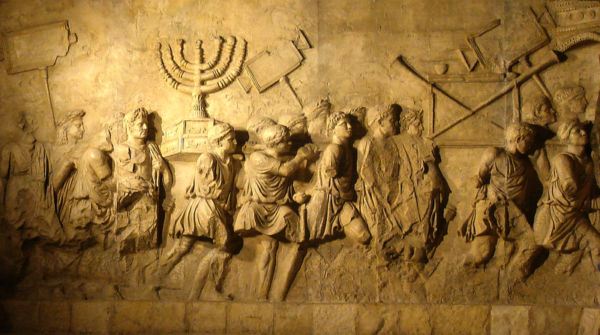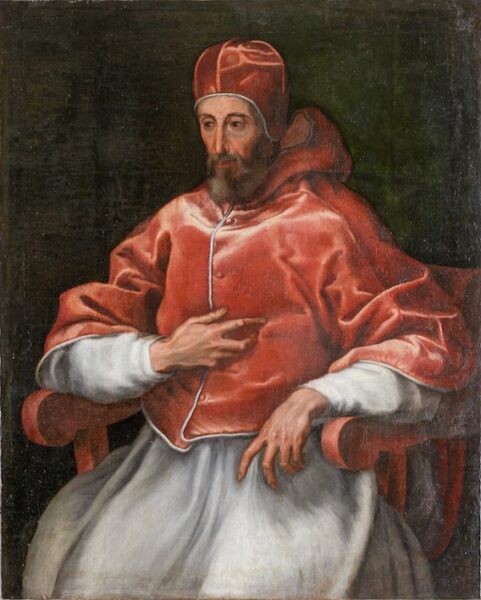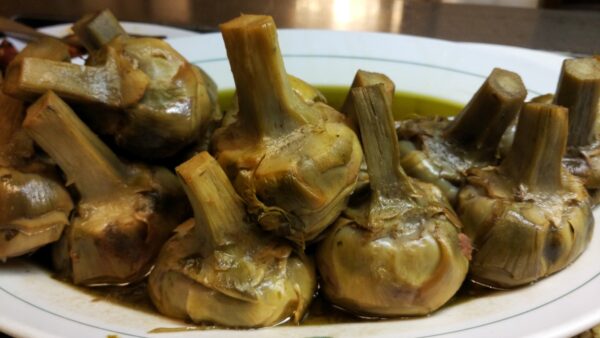
The first Jewish inhabitants in Rome were slaves
Today, Rome’s Jewish population counts some 15,000 people and a dozen Orthodox synagogues. The liturgy of the largest and ornate Il Tempio Maggiore follows the Orthodox Italki rite as practiced by Italian Jews since early Roman times. In fact, Jews have lived in Rome for more than 2,000 years, making it the oldest Jewish community in Europe. The first to arrive, in 161 B.C., were diplomatic envoys sent by the Maccabees to establish a treaty with the Roman Senate asking for its protection from persecution by the Seleucid Greeks. The Romans were delighted to help; they couldn’t wait for an excuse to get their hands on Greek territory.
The best way to explore Jewish Rome is by booking one of the many Jewish Rome Tours listed on the internet. The most extensive website, with the widest choice of tours is “Roman Jews, See Rome through the Eyes of a Roman Jew” run by Marco Misano, born in Rome in an Orthodox Sephardic family, info@romanjews.com, tel. 011-39-345,8464290. Most of Misano tours last between two to three hours. For examples, they include one for children, another with cooking lessons of Roman Jewish dishes, and still others of Jewish symbolism in Michelangelo’s art in the Vatican, and of Jewish catacombs. Others contacts are Micaela Pavoncello, www.jewishroma.com, tel. 011-39-328-8638128 or David Walden at “Jewish Rome Tours”, tel. 011-39-339-7059603.
You’ll learn that after the Maccabees, the tables turned when Rome invaded Judaea a century later. The first members of Rome’s permanent Jewish community arrived in 61 B.C. as Pompey’s enslaved prisoners-of-war, even if they retained the right to regain their freedom. A century later, after the Emperor Titus destroyed the Temple in Jerusalem in 70 A.D., Rome’s Jewish numerous newcomers were again all slaves, who participated in building the Colosseum, and lived across the Tiber in today’s Trastevere neighborhood.

Pope Paul IV

carciofi alla giudia
With the rise of Christianity some popes were tolerant: Gregory I (590-604), Alexander III (1159-1181), Boniface IX (1389-1404), Gregory X (1271-1276), Nicholas IV (1288-1292), Martin (1417-1431), and Leo X (1513-1521), for some examples, but many were antisemitic and hostile: Boniface VIII (1294-1303), John XXII (1316-1334), and Paul II (1464-1471) who required Jews to run races nude to entertain the crowds, who pelted them with mud, during Carnival. Perhaps the cruelest of all was Pope Paul IV. In 1554 he founded Rome’s ghetto. After 1492, when Spain expelled the Jews who refused to convert to Christianity, they came to Rome. So did the Jews in Sicily which was under Spanish rule at that time. Thus, Rome’s Jewish population doubled to c. 5,000 people, so the terrified Pope forced them to live together behind three gates locked at night in a malarial- and flood-prone six acres on the Tiber’s left bank. Previously merchants, bankers, physicians, craftsmen, and papal servants, with these new restrictions for over three hundred years Rome’s Jews were forced to wear yellow scarves and outlandish yellow hats, were prohibited from owning property, and were forbidden to work except as rag or second-hand items sellers and money lenders. They were also required to attend Mass regularly and urged to convert to Catholicism, although few did. Because of their overcrowded, cramped quarters, friggitori or fry shops, were set up in the streets for families without kitchens. These gave birth to carciofi alla giudia, fiori di zucca, filetti di baccalà, deep-fried artichokes, zucchini flowers, and salt cod fillets, still the most popular dishes of Roman Jewish cuisine, which, like the population, has predominantly Sephardic roots.
Rome’s ghetto wasn’t demolished until 1870 when Italy was unified and King Victor Emanuel II granted the Jews full Italian citizenship. One named Ernesto Nathan was elected mayor of Rome from 1907-1913 and is famous for the phrase “non c’è trippa per gatti” when he abolished the entry from the city’s strained budget to pay for tripe for the city’s numerous stray cats. Another Luigi Luzzati was briefly Prime minister from 1901-11, and ironically several Jews were close advisors to Mussolini before Il Duce enforced the 1938 racial laws already imposed by Hitler in Germany.

Rabbi Elio Toaff greeting Pope John Paul II at the Tempio Maggiore in 1986
The King had also given the Jews the right to live wherever they wished, but many chose to remain in their close-knit neighborhood with its centuries of tradition. This led to the darkest episode in local Jewish history commemorated with several on-site wall plaques. On October 16, 1943, the Nazi German occupiers rounded up Jews throughout Rome, but the ghetto was their rendezvous point. From the Piazza Portico d’Ottavia 2,091 were deported to death camps in Germany and Poland; only 16 returned.
The ghetto’s main sight is the already-mentioned Tempio Maggiore, built between 1901-4. In 1986 Pope John Paul II, who finally acknowledged that the Church should have intervened more forcefully to defend Jews during Holocaust, was the first Pope to visit here; in 2010 Benedict XVI was the second; and in 2016 Francis I was the third. In its basement is Rome’s Jewish Museum (tel. 011-39-066840061). Each of its seven rooms has a theme: 1)900 precious Renaissance velvet coverings decorated with Baroque-era golden thread, embroidery and lace and 400 pieces of silverware for liturgical use; 2)tombstones from the Roman catacombs and Ostia’s synagogue, the oldest, although not in use, in Italy, as well as Medieval manuscripts; 3)artifacts used during holiday observances; 4)liturgical items donated by the ghetto’s residents; 5)objects dating from the Jewish emancipation to the present; 6)documents about Libyan Judaism and how the Libyan Jews expelled by Gheddafi in 1967 assimilated to the Rome’s community; 7)objects illustrating life in the ghetto through the ages.
Other Jewish sights in Rome are outside the ghetto: the menorah carved on the Arch of Titus in the Roman Forum; and five Jewish catacombs, believed by scholars to predate the Christian ones by at least a century (Villa Torlonia, Vigna Apoloni, Vigna Cimarra, Vigna Randanini, and Monteverde). To visit Villa Torlonia’s, telephone 011-39-340-7368280.
To stay or eat in the ghetto: two of Rome’s five Kascèr Bed and Breakfasts are on the Portico d’Ottavia (for reservations telephone Michele at: 011-39-066793844). Also here are several Kascèr restaurants, Bellacarne Kosher Grill, Renato al Ghetto, Ba’ Ghetto, and Nonna Betta, all good, although my favorites are La Taverna del Ghetto for its medieval atmosphere, and around the corner on Piazza Cenci Yotvata, which takes its name from the oasis in present-day Israel where the Jews first stopped after leaving Egypt with Moses. What makes Yotvata unique is not only the ghetto’s best menu, but that, although its owner Marco Sed is an observant Orthodox Jew, his staff includes a practicing Muslim, Coptic Christian, and a Roman Catholic.
For Kascèr sweets head to “Marlene’s Kosher Gelateria”, the “Antico Forno del Ghetto”, famous for its bread called “ossi” meaning bones and “Forno Boccione”. Its specialties, a kind of “Jewish Strudel” or a pastry roll of candied fruits, almonds, raisins and pine nuts called “pizza ebraica” or “tronchetto” and its almond and cinnamon biscuits were favorites of Pope Benedict XVI.
Nearby are three other even better-known “Jewish” restaurants: Evangelista, famous for its carciofi al mattone or artichokes squashed between two bricks and baked, a favorite dish of Karol Cardinal Wojtyla before his election as pope, Dal Pompiere, and Piperno, already famous with foreign tourists when the ghetto was still locked at night.
Outside of Rome, the other places famous for artichokes are five islands in the Venetian lagoon: Vignole, Sant’Erasmo, Mazzarbo, Lio Placido, and Torcello. These are smaller than the Roman ones and with a shorter season, only between May and June, not Christmas through Easter. Their leaves have purple tips. The best places to taste them are at Harry’s Bar and Gio’s in the St. Regis Hotel.
Back home again, the best souvenir of Rome’s ghetto is Leah Koenig’s newest (2003) book Portico: Cooking and Feasting in Rome’s Jewish Kitchen illustrating its history and food with magnificent photographs and 100 recipes. $37.50.
THE ARTICHOKE: Myth, Botany, and History
Since the artichoke, carciofo in Italian, is the cornerstone of Roman Jewish cuisine, it seemed an appropriate accompaniment to t “Jewish Rome: Europe’s Oldest Community.”
According to Greek myth, the artichoke owes its existence to the philandering Zeus. During a visit to his brother Poseidon Zeus spotted a gorgeous young girl, Cynara, bathing on a beach. He fell in love with her at first sight, seduced her, proclaimed her a goddess, and took her back with him to Mount Olympus. Cynara, however, was lonely there; she missed her mother very badly and soon kept sneaking back home. Zeus was so infuriated that he banished her and turned her into an artichoke, hence the name Cynar for the Italian artichoke-based after-dinner liqueur.
Botanically-speaking artichokes are members of the aster Asteraceae) family (also known as Compositae), which includes cardoons or thistles, various chicories and tarragon, along with sunflowers, chrysanthemums, and chamomile.
Historically we know that the ancient Romans ate artichokes, likely a native of North Africa and Sicily, pickled in honey and vinegar, and seasoned with cumin. Pliny the Elder (23/24-79 AD, when he died during the eruption of Vesuvius) mentions two types of these edible thistles. One was thicker than the other and had a single stem and purple flowers, so it’s probably the progenitor of the modern globe artichoke. According to Pliny it had several beneficial medical effects: cures for baldness and indigestion, a breath freshener, an aphrodisiac, and a guarantee to give birth to boys. After the fall of the Roman Empire, the artichoke seemed to lose favor, until the Moors began growing and eating them in Spain and on the Spanish-ruled island of Sicily during the Middle Ages.

carciofi alla romana
When the Jews were expelled from Spain during the Inquisition, they had made their way to Sicily bringing the artichoke with them. Exiled also from there in 1493 by the Inq uisition, they came to Rome. At first the non-Jews in Sicily, southern Italy and Rome avoided eating the artichoke calling it “the Jewish vegetable”. However, after Pope Paul IV established the ghetto and the Jews lacked the finances to be choosy, they began frying vegetables in boiling hot olive oil and carciofi alla Giudìa were born and became the cornerstone of Kascèr, but soon of Roman cuisine in general. They’re also known as alla romana if cooked in olive oil with garlic, parsley and mint, but not fried.
In fact, in 1570 Bartolomeo Scappi (1500-1577), private chef to Pope Pius V (r. 1566-72) published in Rome the first recipe for artichokes in his six-volume illustrated “Opera of the Culinary Arts”. He suggested stuffing them with a mixture of veal, ham, cheese, eggs, spices, garlic and herbs. Another Roman artichoke event took place in April 1697 when Prince Borghese organized a grand reception in honor of Pope Innocent XII (r. 1691-1700) at which 3,400 artichokes were served.
Still another amusing artichoke anecdote concerns Angelo Valiani, a farmer from southern Tuscany, who at the end of the 19th century made a name for himself in Rome as “the master of the cold buffet” for his specialty carciofini sott’olio or peeled artichokes preserved in a jar of olive oil. His invention made him a wealthy man so, out of thanks, when his son was born, he wanted to name him “Carciofino”. When the priest refused to baptize the baby with a non-Christian name, Valiani protested: “Father, if our pope Leo XIII has the same name as a wild beast, I see no reason not to name my son after a harmless plant”, so the priest agreed.

Rabbi Riccardo di Segni
Artichokes still continue to plant controversies. During Passover 2018, Israel’s chief rabbinate declared that artichokes prepared whole could not be considered kascèr since small bugs might hide among their leaves. The ghetto’s restaurateurs and Rome’s Jewish home cooks were deeply insulted since they’d been preparing carciofi alla giudìa for over 500 years with no problems. To end the controversy Rome’s chief rabbi Riccardo di Segni made of video of himself preparing this Roman delicacy while wishing holiday greetings to his community.
Today, although artichokes are cultivated Egypt, Spain, France Peru, Switzerland, Germany and Austria with a worldwide production of 1.33 million tons annually, more are cultivated in Italy (367,000 tons) than anywhere else in the world and more artichokes are eaten in Rome than any other city. It’s said that Catherine de Medici (1519-89) brought them from Florence to France when she arrived at age 14 to marry the future King Henry II. From France their popularity spread to Holland and England, and then to the United States where George and Martha Washington grew them at Mount Vernon and Thomas Jefferson at Monticello.
